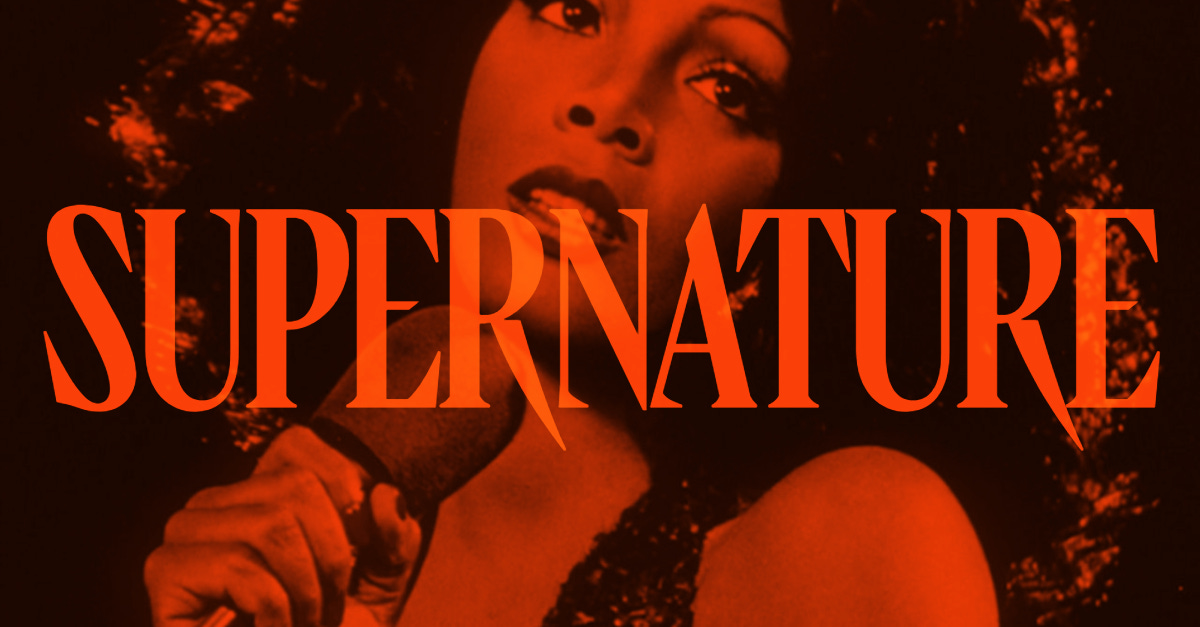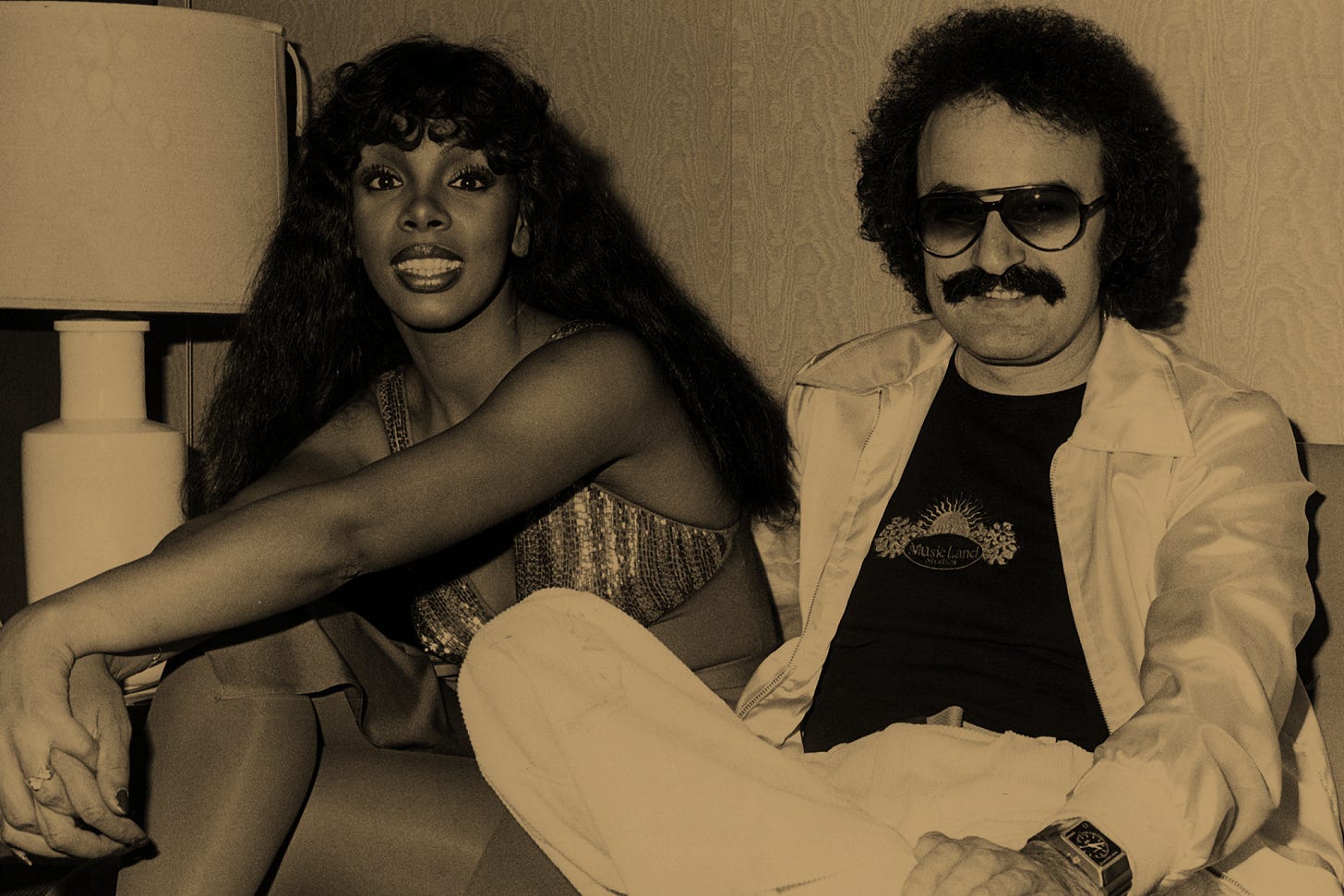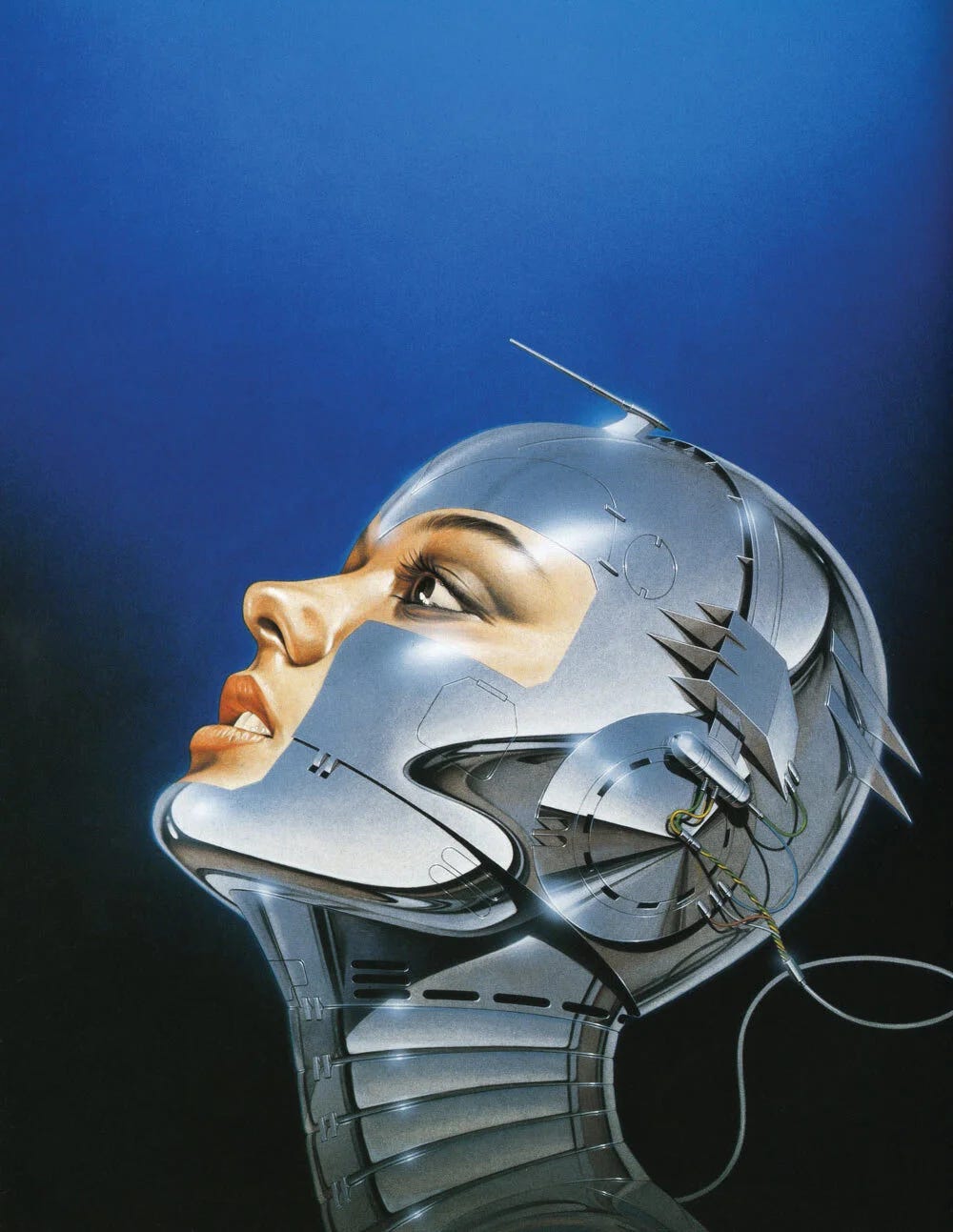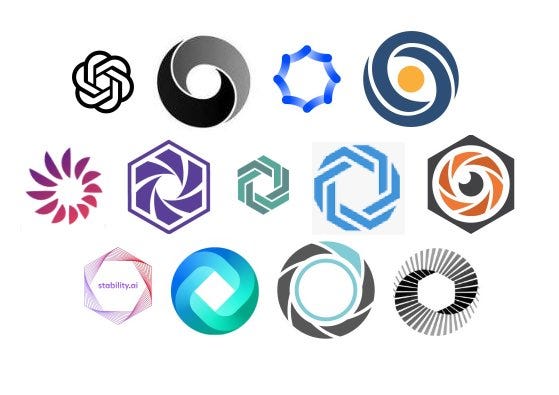SUPERNATURE
If you’re going to make humanity obsolete, then you could at least have the common decency to do it with style.
The late 1970s. A period of social and economic collapse disguised in a leisure suit. Garbage piles up in the decaying streets of New York City while Studio 54 sprays champagne over it.
Cheap cocaine, and disco balls, and spinning dance-floors, and nicotine saturated synthetic fabrics, and pulsating four to the floor beats drowning out the hum of nuclear annihilation ticking away in the background.
The climax to a decade of burnt-out cities, stagflation, serial killers, Jonestown, Baader-Meinhof, and political assassinations. A world no longer believing in the future while embracing a kitsch simulacra of it. Go watch 1968’s Barbarella and then 1977’s Logan’s Run to see the difference a decade can make.
I Feel Love (1977). Giorgio Moroder’s inhumanly perfect sequencer, mechanical pulsation. Donna Summer moaning over it, ghost in the machine, ethereal diva.
Flesh strapped to circuitry. Cronenberg was taking notes. So was Hajime Sorayama. HR Giger was ten years ahead of the pack, but whatever was in the air piqued Ridley Scott’s interest just in time for 1979’s Alien.
Brian Eno caught it in Berlin and immediately called David Bowie. “I’ve heard the sound of the future”. He was not exaggerating. The whole next fifty years, the relentless grid of digital culture was encoded in Munich by an Italian composer & high school dropout from Boston.
I Feel Love revealed that machines were better at pleasure than humans. More precise than a rhythm section, more seductive. It was obscene because it made humanity’s obsolescence sound ecstatic. The future will replace us, and it will compel us to dance while it terminates our utility.
This is what makes it a sort of ur-text of late modernity. It was born out of a world disintegrating. Streets quite literally burning, empires metaphorically collapsing. Upon arrival it offers up ecstasy through surrender. The arpeggiated loop as consolation, the machine as lover, propulsive paranoia. From the ruins came forth rhythm.
We are now living in the sequel. The backdrop is similar: decay, paranoia, digitised entropy dressed up as regular, everyday normal life. Climate collapse is new. Stagflation (nice to see a recurring character), algorithmic hysteria replaces the Cold War paranoia, and political violence makes a few cameos.
Once again we eroticise the machinery that replaces us.
If the late seventies gave us Donna Summer sighing suggestively over Moroder’s synthesized wizardry, the late twenty twenties is giving us AI girlfriends whispering ASMR through earbuds, OnlyFans creators training bots to sext on their behalf, and deepfaked simulations that no longer require the living presence of a body at all. The loop has evolved from an arpeggiated pulse in a club and into totally simulated intimacy piped directly into the bloodstream
But there is a difference.
In the late 1970s, the future was delivered with taste. Ridley Scott and Giger rendered extraterrestrial paranoia as baroque gothic. Stanley Kubrick’s A Clockwork Orange showed us social collapse taking place inside futurist interiors and soundtracked by Beethoven. George Clinton delivered a mothership salvation with Afrofuturist glam. Even full blown collapse had an aesthetic drive, a sense of theatre, it looked and sounded really, really cool.
In 2025 the collapse has been stripped of all that. Utility is the new dictat, AI merely serves. The fantasy isn’t chrome androids writhing under strobe lights, it is frictionless scheduling apps, synthetic ways to get your rocks off on-demand, a chatbot that helps you book your groceries. Zero artistry, pure utilitarian convenience.
This is what makes everything uniquely bleak. The machine is no longer pretending to be a muse. It is simply a servant. Ecstasy and glamour completely metabolised into utility and optimisation.
If you’re going to make humanity obsolete, collapse the climate and erode the fabric of society, then you could at least have the common decency to do it with style.





